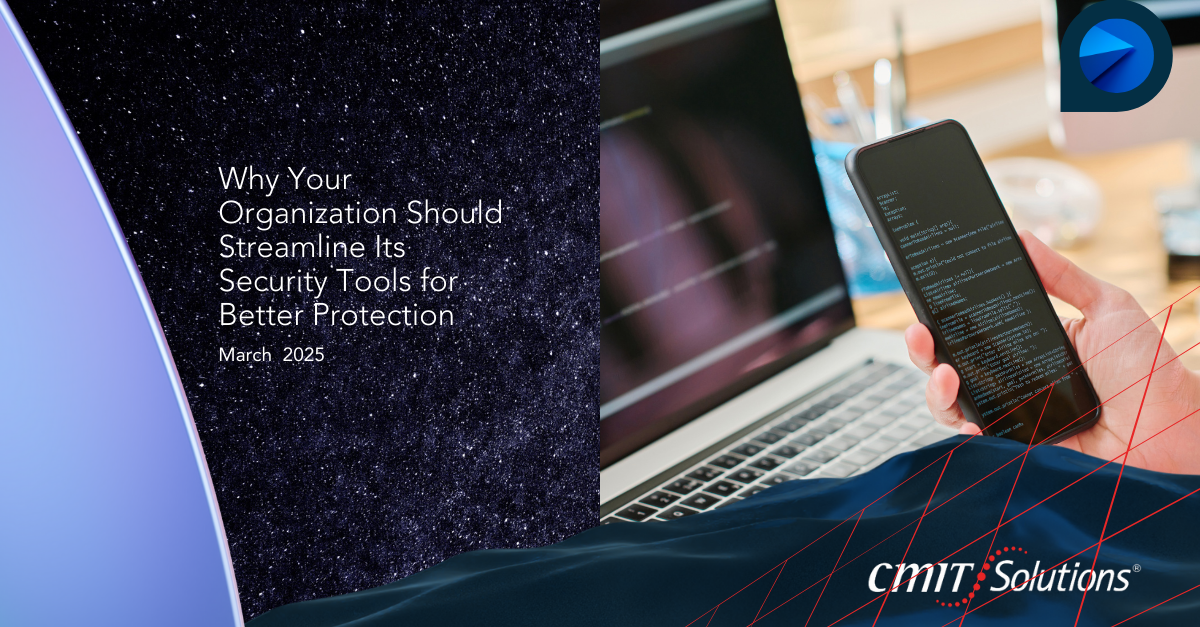Introduction
As cyber threats continue to evolve, many businesses respond by adding more security tools to their IT environments. However, more security tools don’t always mean better protection. Many organizations experience security tool sprawl, where redundant and underutilized solutions create inefficiencies, increase costs, and complicate threat response.
At CMIT Solutions of Charleston, we specialize in Managed IT Services that optimize cybersecurity strategies, ensuring businesses maintain robust protection without unnecessary complexity. In this article, we’ll explore why your business may need to eliminate some security tools, streamline IT security, and strengthen your cybersecurity posture.
The Hidden Risks of Too Many Security Tools
1. Increased Complexity and Inefficiencies
Having multiple security tools that perform similar functions leads to inefficiencies and increased administrative overhead. IT teams must constantly monitor and manage different platforms, making it harder to detect real threats among a sea of alerts.
Organizations with too many security tools often experience:
- Alert Fatigue: IT teams become overwhelmed by redundant alerts.
- Delayed Threat Response: Critical threats may be missed due to data silos and lack of integration.
- Configuration Challenges: Keeping all tools properly configured can be time-consuming and costly.
Businesses struggling with alert overload should consider consolidating cybersecurity solutions to improve efficiency.
2. Higher Costs with Limited ROI
Security tools require ongoing investments in licenses, maintenance, and training. Many companies spend excessively on overlapping solutions while failing to utilize all features available in their existing tools.
By assessing your security stack, you can:
- Identify unused or redundant solutions.
- Optimize security spending by investing in strategic IT solutions.
- Enhance cost-effectiveness with outsourced IT security.
3. Security Gaps and Inconsistencies
Ironically, having too many security tools can create security gaps. Without proper integration, different security platforms may not communicate effectively, leading to:
- Misconfigurations that expose vulnerabilities.
- Inconsistent security policies across different IT environments.
- Data silos that make compliance auditing difficult.
For businesses concerned about compliance, IT compliance audits can help ensure regulatory requirements are met while streamlining security processes.
Steps to Reduce Security Tool Sprawl
Step 1: Conduct a Security Assessment
A detailed security review helps identify which tools are redundant or underutilized. Companies can use frameworks like:
- NIST Cybersecurity Framework
- Cyber Defense Matrix
A security assessment should evaluate how tools align with business objectives and compliance needs. Organizations can use incident response planning to analyze vulnerabilities and prioritize critical security measures.
Step 2: Consolidate Overlapping Solutions
After identifying redundancies, IT teams should look for integrated cybersecurity solutions that provide multiple capabilities under a single platform. Businesses can improve protection and reduce costs by choosing:
- All-in-one cybersecurity platforms.
- Managed Security Services from Charleston IT support providers.
Step 3: Optimize Threat Detection and Response
Advanced security strategies should focus on proactive threat detection and remediation. Businesses can leverage endpoint security best practices to:
- Strengthen cybersecurity defenses.
- Ensure real-time threat detection.
- Reduce false positives and eliminate redundant alerts.
Step 4: Leverage Managed Security Services
Partnering with CMIT Solutions of Charleston allows businesses to simplify security management and eliminate unnecessary IT tools. With managed IT support, companies can focus on business growth while cybersecurity experts handle security optimization.
The Future of Cybersecurity: A Smarter, Streamlined Approach
Security threats are constantly evolving, and businesses need scalable, integrated, and cost-effective security solutions. The future of cybersecurity emphasizes:
- AI-driven threat intelligence for faster detection and response.
- Cloud-based security platforms that eliminate the need for multiple on-premise tools.
- IT automation to streamline security management.
Conclusion: Take Control of Your Security Strategy
Having the right security tools is critical, but too many tools create inefficiencies, increase costs, and introduce vulnerabilities. By conducting a security assessment, consolidating redundant solutions, and adopting a streamlined cybersecurity strategy, businesses can enhance protection and operational efficiency.
At CMIT Solutions of Charleston, we specialize in managed cybersecurity solutions that optimize IT security while reducing complexity.




